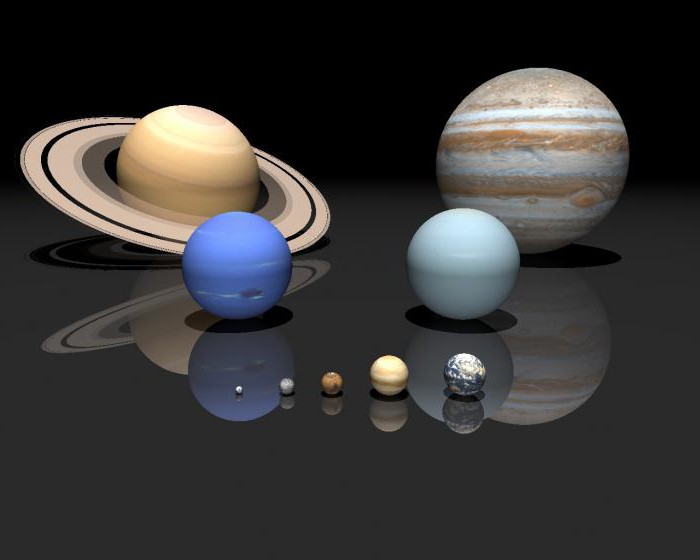Earth is the largest planet in the earth group. It is in third place at a distance from the Sun and has a satellite - the Moon. Earth is the only planet that is inhabited by living beings. Human civilization is an important factor that has a direct impact on the face of the planet. What other characteristics are inherent in our Earth?
Shape and weight, location
Earth is a gigantic cosmic body, its mass is about 6 septillion tons. In its form, it resembles a potato or pear. That is why researchers sometimes call the form that our planet has, "potatoid" (from the English. Potato - potato). Equally important are the characteristics of the Earth as a celestial body, describing its spatial position. Our planet is located 149.6 million kilometers from the sun. For comparison, Mercury is located 2.5 times closer to the star than the Earth. And Pluto is 40 times farther from the Sun than Mercury.
Neighbors of our planet
A brief description of the Earth as a celestial body should also contain information about its satellite - the Moon. Its mass is 81.3 times less than the earth. The earth rotates around its axis, which is located at an angle of 66.5 degrees relative to the orbital plane. One of the main consequences of the rotation of the Earth around its axis and its movement in orbit is the change of day and night, as well as the seasons.
Our planet is part of the group of so-called earth planets. Venus, Mars and Mercury are also included in this category. The more distant giant planets - Jupiter, Neptune, Uranus and Saturn - are almost entirely composed of gases (hydrogen and helium). All planets that belong to the earthly category rotate around their axis, as well as along elliptical trajectories around the Sun. Only Pluto, by virtue of its characteristics, is not included in any group by scientists.
Earth's crust
One of the main characteristics of the Earth as a celestial body is the presence of the earth's crust, which, like a thin skin, covers the entire surface of the planet. It consists of sand, various clays and minerals, stones. The average thickness of the earth's crust is 30 km, but in some areas its size is 40-70 km. Cosmonauts claim that the earth’s crust is not the most amazing sight from space. In some places, it is reared up by mountain ranges, in others, on the contrary, it falls down by giant pits.
Oceans
A small characteristic of the Earth as a celestial body must necessarily include a reference to the oceans. All pits on Earth are filled with water, which provides shelter for hundreds of living species. However, much more plants and animals can be found on land. If we put all living creatures that live in the water on one bowl of scales, and those who live on land - on the other, then the bowl with the inhabitants of the land will be heavier . Its weight will be 2 thousand times more. This is very surprising, because the ocean area is more than 361 million square meters. km or 71% of the entire surface of the Earth. Oceans are a distinctive feature of our planet along with the presence of oxygen in the atmosphere. Moreover, the proportion of fresh water on Earth is only 2.5%, the rest of the mass has a salinity of about 35 ppm.
Core and mantle
The characteristic of the Earth as a celestial body will be incomplete without a description of its internal structure. The core of the planet consists of a hot mixture of two metals - nickel and iron. It is surrounded by a hot and viscous mass that looks like plasticine. These are silicates - substances that are similar in composition to sand. Their temperature is several thousand degrees. This viscous mass is called the mantle. Its temperature is not the same everywhere. Near the earth's crust, it is about 1000 degrees, and with approaching the core, it increases to 5000 degrees. However, even in areas close to the earth's crust, the mantle may be colder or hotter. The hottest areas are called magma chambers. Magma burns through the surface of the earth's crust, and volcanoes, lava valleys, and geysers form in these places.
Earth atmosphere
Another characteristic of the Earth as a celestial body is the presence of the atmosphere. Its thickness is only about 100 km. Air is a gas mixture. It consists of four components - nitrogen, argon, oxygen and carbon dioxide. The remaining substances are present in air in small quantities. Most of the air is located in the atmosphere, which is closest to the surface of the Earth. This part is called the troposphere. Its thickness is about 10 km, and its weight reaches 5000 trillion tons.

Although in ancient times people did not know the characteristics of the planet Earth as a celestial body, even then it was assumed that it belongs to the category of planets. How did our ancestors make such a conclusion? The fact is that they used the starry sky instead of clocks and calendars. Even then, it became clear that different luminaries in the sky are moving in their own way. Some practically do not move (they began to call them stars), while others often change their position relative to the stars. That is why these celestial bodies began to be called planets (in Greek, the word "planet" is translated as "wandering").